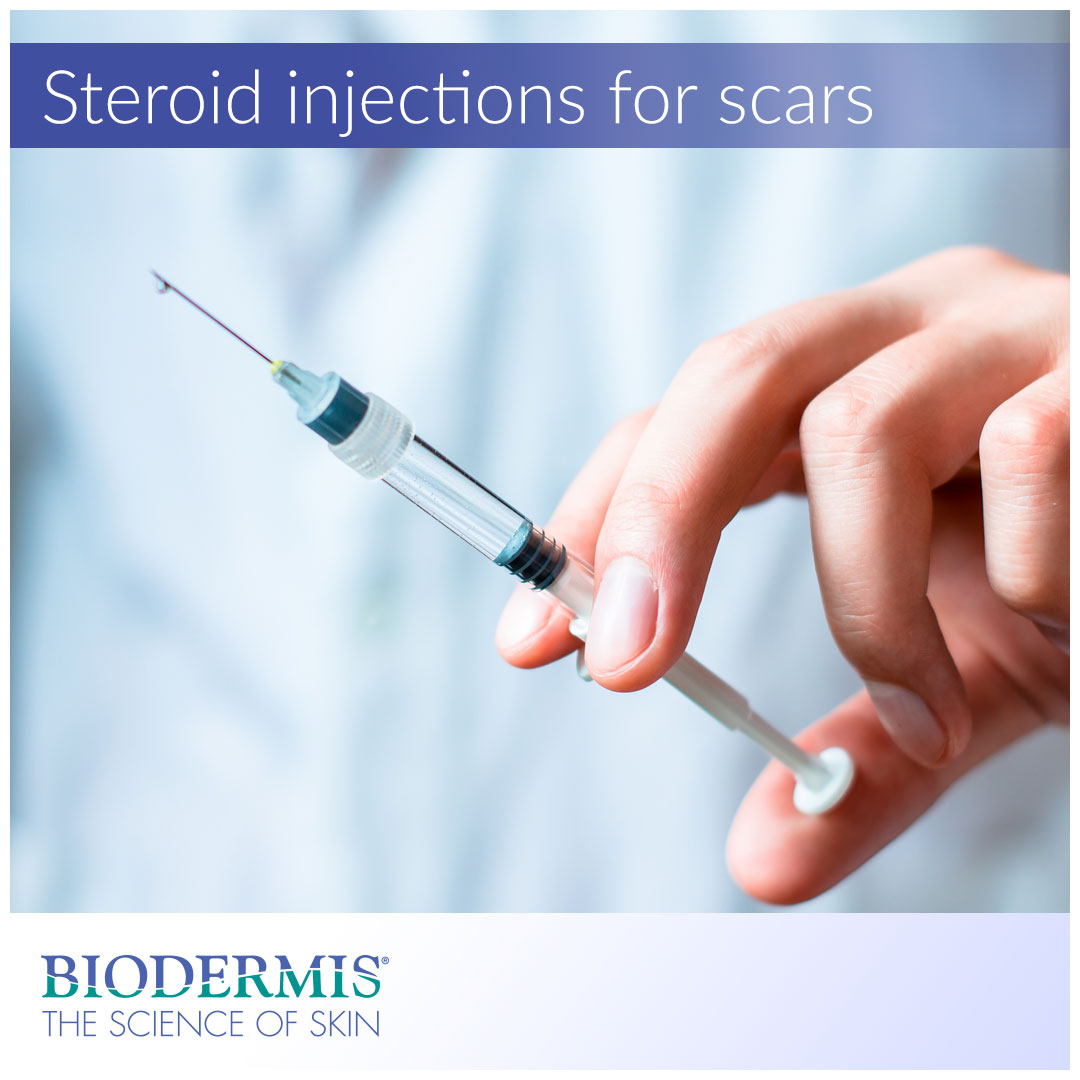Intralesional steroid injections for raised and abnormal scar types are a common form of treatment provided by most dermatologists. Keloid and hypertrophic scar formations and other skin lesions are good candidates for steroid injections. This treatment method has helped many patients over the years, but there are a number of adverse side effects one should be aware of. It’s important to know that while steroid injections can help reduce the appearance of abnormal and unsightly scars, they are not the only treatment option.
What are steroid injections?
It’s clear that corticosteroids play an important role in the human body, but what about the synthetic version used in steroid injections? Without being too technical, triamcinolone (medical steroid) is an artificial compound that closely mimics the chemistry of naturally-occurring corticosteroids. In essence, corticosteroids produced in the lab aid in the body’s natural repair response if used according to a doctor’s prescription.
Dermatologists administer corticosteroid injections directly into a hypertrophic or keloid scar. Intralestional steroids can also be injected into the tissue bed to prevent the formation of scar tissue overgrowth. It's understood that synthetic steroids decrease the inflammation and proliferation response involved in wound repair by slowing excess collagen production. This has the effect of softening and flattening scars, helping them blend in with the surrounding tissue.
The side-effects of corticosteroid injections
Patients may endure either immediate or delayed reactions after receiving intralesional injections. Because scars and other skin lesions are sensitive areas, patients run the risk of bleeding, enduring mild to severe pain, bruising, and infection shortly after injection. Some patients experience contact dermatitis from treatments, also known as eczema—an itchy, scaly rash on the skin.
Delayed reactions from steroid injections can occur days, weeks, or months after the initial treatment. These delayed reactions include white or brown marks on the skin, increased hair growth at the treatment site, and steroid-induced acne. A cutaneous condition known as lipoatrophy, or localized fat tissue loss, can leave small dents in the patient’s skin after injection. While most of these delayed side-effects are temporary, they can be bothersome to the patient.
A safe alternative for scar management
Because keloid and hypertrophic scars often require multiple steroid injections over a period of weeks or months, there is increased risk for both immediate and delayed reactions. Luckily, there are topical solutions for scar therapy that don’t involve needles or an array of unwanted side-effects.Biodermis emerged three decades ago as the leader in topical medical-grade silicone, faithfully serving dermatologists and plastic surgeons around the world. With highly regarded products like Epiderm Silicone Gel Sheets and Pro-Sil Silicone Scar Sticks, choosing the right scar therapy option for your scars is seamless. And the best part, no needles!
Biodermis is an innovative market leader with 30 years of expertise in the medical silicone industry. Visit Biodermis.com today to explore a complete range of scar management and post-operative care solutions.
Biodermis offers custom-tailored referral programs designed to simplify and reduce the cost of your patients' post-op care. Additionally, we offer professional pricing if you opt to retail our products. Give us a call at 800.322.3729 and we will be happy to provide additional details on these programs.






